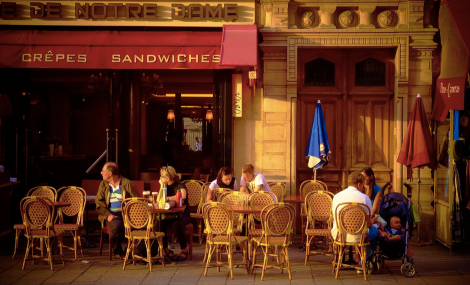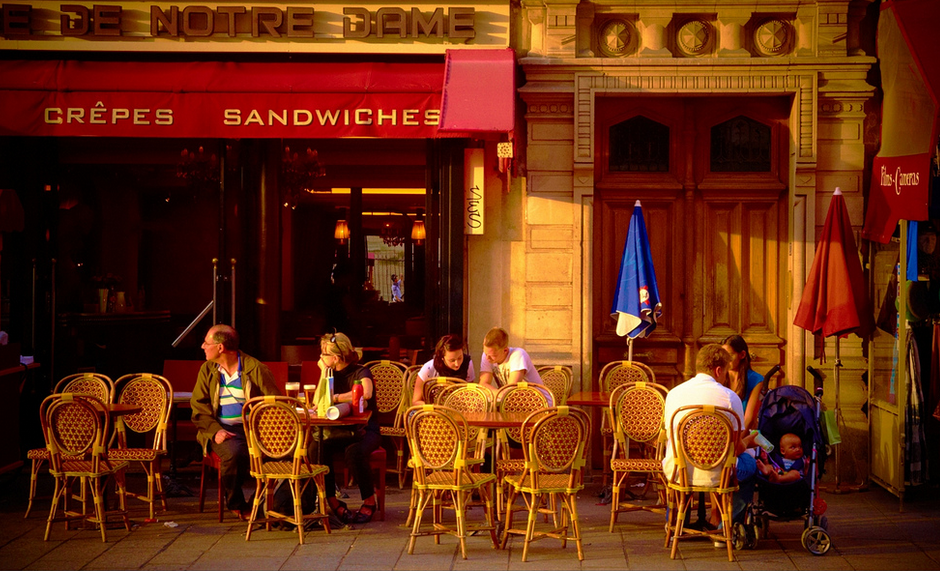
Moyan BrennPutting the “sit” back in “city.”
Walkable cities are great. But once you get where you’re walking, you want to relax, right? Urbanism Without Effort author Chuck Wolfe argues in a blog post that ample public places to gather, rest, and converse are even more important for a city than how walkable it is:
Simply stated, walkable is good, but sit-able is better. And it’s time for the next big focal point and the next big idea, The Sit-able City …
[S]it-able places are key, interdisciplinary focal points where the delight of “placemaking” and cultural traditions of “watching the world go by” merge with the sometimes conflicting domains of law and politics, economic development, public safety, gentrification and the homeless.
Sit-able cities are ones with plenty of park benches, space for street vendors, and dining al fresco. But there’s more to it than that, Wolfe says. These places provide safe, comfortable seating for conversation and contemplation, adding to a city’s “place capital,” he writes. Transportation is ephemeral; sitting is eternal. (Or so he would imply.) I think the point is that a good city brings people together safely, quickly, and easily — and then gives them the space to hang out once they’re there.
It seems like a bit of a false dichotomy — can you think of a walkable city that’s not a sit-able one? Or vice versa — a freeway lined with quaint cafés? To some extent, walkable and sit-able go hand-in-hand. (And to get way literal, any city that’s not completely vertical is technically a sit-able one.)
And I wouldn’t be so quick to write off walking as merely utilitarian and destination-oriented. Just like sitting, walking — through a park, to lunch with a coworker — can be the backdrop for conversation or simply enjoying your surroundings. But ultimately Wolfe is right. Urban planners should not only consider whether a city can be traversed on foot, but whether people have spaces to congregate when they get where they’re going.



